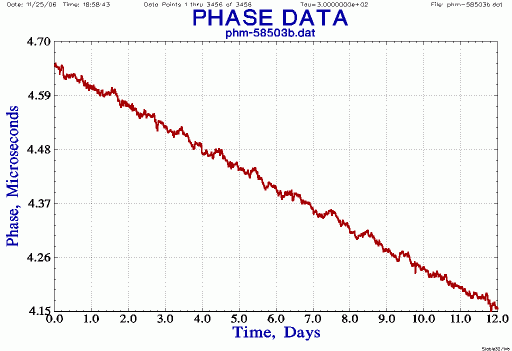
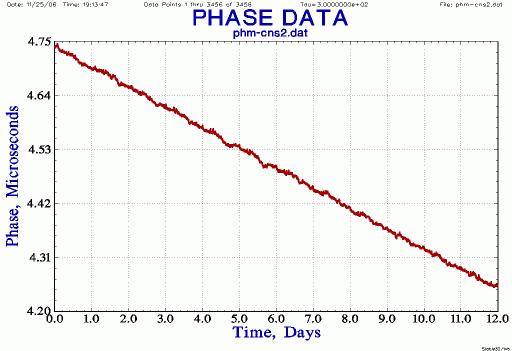
25-Nov-2006
I wondered which would make a better long-term 1PPS GPS reference: a fancy GPSDO or a bare GPS receiver.
Below is a 12-day comparison between an HP 58503B GPSDO and a CNS-II clock, using a common GPS antenna and compared against a common house 1PPS reference.
The 58503B GPS Time & Frequency Reference Receiver is a GPSDO containing an 8-channel Motorola Oncore VP, a high-end 10811 OCXO, a 100 ps TIC, and a processor running the HP SmartClock algorithm. It produces both a stable 10 MHz RF output and a 1PPS output.
The CNS Clock II is just a 12-channel Motorola M12+ in a box. It is a 1PPS time source only (no RF frequency output). The 1PPS output comes directly from the M12, through hardware sawtooth correction, but not smoothed or filtered in any way.
Below are a set of side-by-side plots where the two timing sources are compared.
First, here are the raw phase plots for the 58503B and the CNS2.
Note the reference has a (deliberate) phase offset of about 4 µs. The reference is also slightly off-frequency (-4.76x10-13).
Both plots have the same scale: 12 days on the x-axis and 0.55 µs for the y-axis.
Nothing special here other than, perhaps, to note that one can resolve frequency errors of a few parts in 10-13 in just one or two days.
 |
 |
Next, we remove the arbitrary phase offset and calculated frequency offset giving the following normalized residual phase plots.
Both plots have the same scale: 12 days on the x-axis and ±20 ns for the y-axis.
One can already see a bit more noise in the GPSDO. Both show daily periodicities above the noise. Neither shows any serious amount of drift or other anomalies. Both show that averaging for times less than a day or not a multiple of a day is not a good idea.
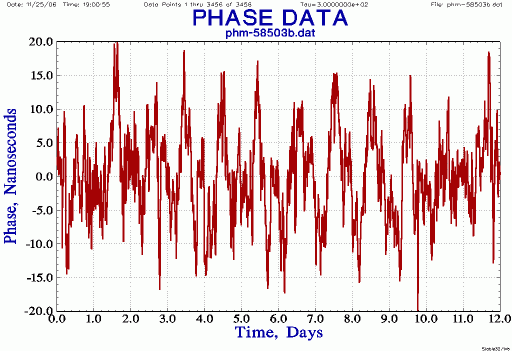 |
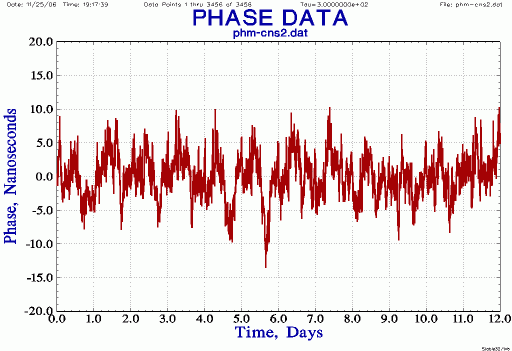 |
Now we compute the Allan deviation. In this case I chose to use overlapping ADEV.
Both GPS clocks get to 10-13 at an averaging time of one day. We can see, as the phase plots hinted above, that the CNS2 clock is about 2x better. See, for example, the point at 60k seconds: 2.08x10-13 vs. 1.08x10-13, for the 58503B and CNS2, respectively.
Although these plots have a minimum tau of 300 seconds (5 minutes) the superior performance of the GPSDO at shorter tau is already evident.
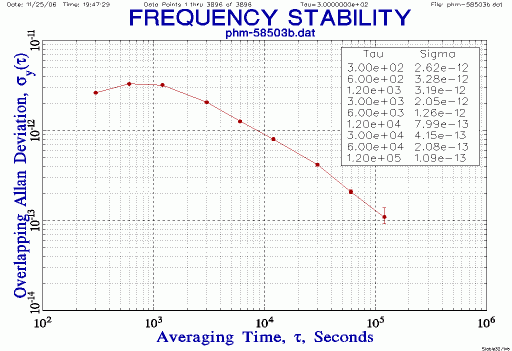 |
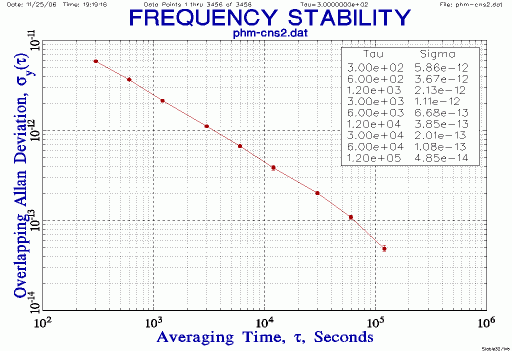 |
A better diagnostic in this case is to compute ADEV for all tau (or many tau), i.e., not just a few calculated points per octave or per decade connected by an extrapolated line segment, but as many points as possible (or as many points as necessary) to blur individual measurements into a line. This gives a continuous set of measurement points and thus a finer view into the periodic effects on stability.
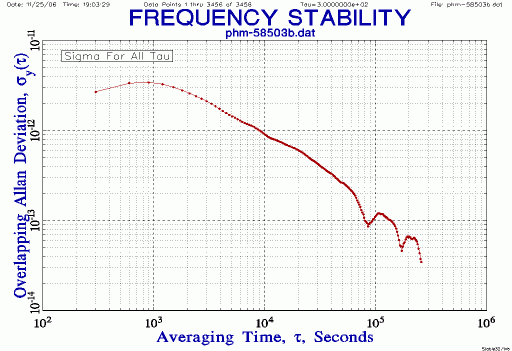 |
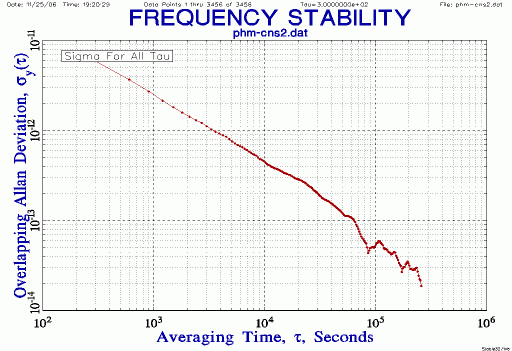 |
In the above we can see nice stability bumps where we would expect, given the look of the phase plots.
There is better than usual stability with tau exactly 1.0 or 2.0 days; a little less than usual stability with tau exactly 0.5 or 1.5 or 2.5 days. GPS orbit and multi-path effects have ~12 h periods; diurnal effects such as temperature have ~24 h periods.
At 100k seconds, the two receivers are stable to about 1.0x10-13 and 5.0x10-14.
This is perhaps not a perfectly fair comparison, since the older GPSDO uses an 8-channel Oncore VP and the newer CNS2 uses a 12-channel M12+, but I needed to find out which made a better 1PPS reference, regardless.
The goal was to check the long-term performance of some cesium standards against a GPS 1PPS reference; the question was where to get the best GPS 1PPS.
I conclude that as a long-term 1PPS GPS reference, a plain GPS board is better than a GPSDO made from that same board. When you think of it, this makes sense: the expensive OCXO and sub-nanosecond TIC and clever onboard algorithms and precision DAC can add nothing to long-term performance. All the complications of a GPSDO exist only for short-term performance, to provide the frequency reference feature, to allow holdover. If all you need is a timing reference, particularly a long-term timing reference, none of the complications of a GPSDO are needed.
In summary, a composite plot showing both of these GPS timing receivers:
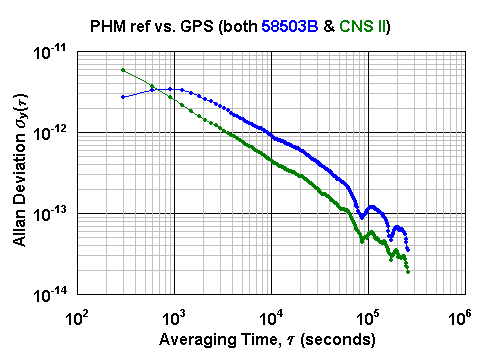
This is not to say a GPSDO isn't useful. It's just in this particular case (comparing cesium standards, long-term, with 1PPS) a plain GPS receiver with sawtooth correction was sufficient and 2x better.
The HP/Agilent/Symmetricom 58503B SmartClock and its Z3801A cousin are no longer made.
The CNS Clock II is designed and sold by CNS Systems.
The cesium standards were being tested for Project GREAT.